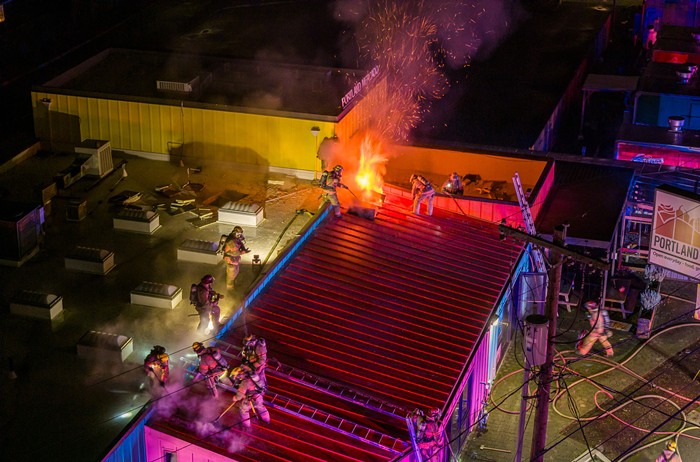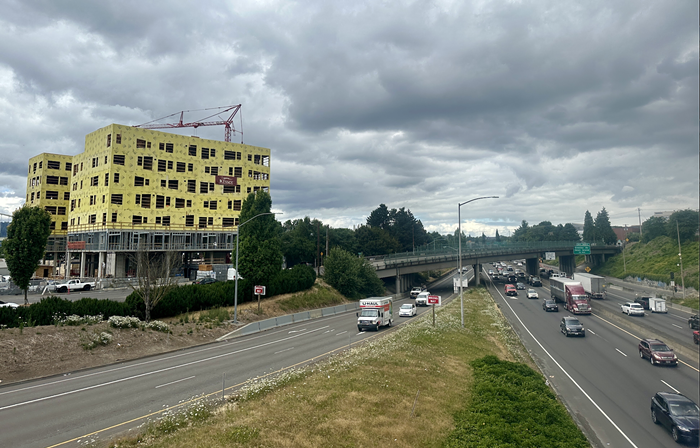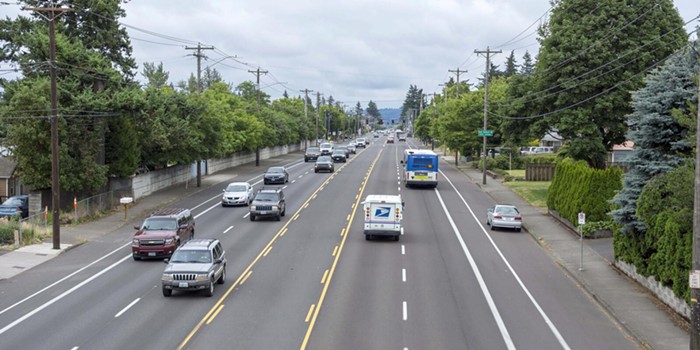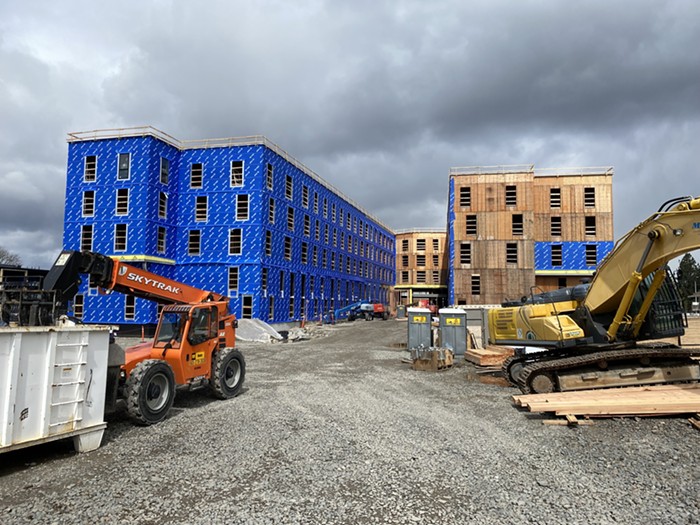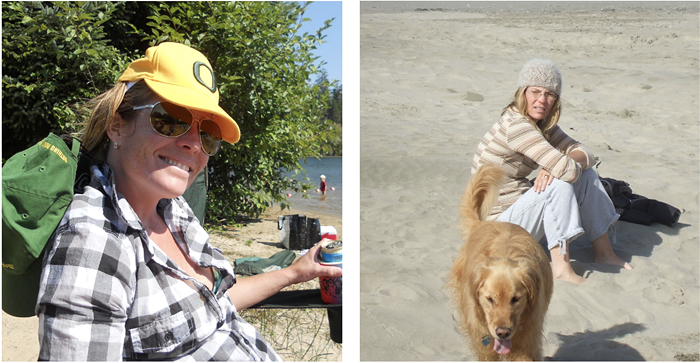
For more than eight years, it appears Portland glass outfits Bullseye Glass and Uroboros Glass have been required to use pollution control devices on their stacks under US Environmental Protection Agency rules. These devices—"baghouses" are a common type, though there are others—would have been highly effective at keeping metals like cadmium, arsenic, and chromium from escaping the factories' glass melt furnaces and making it into nearby air.
But the factories never installed the pollution controls because—it turns out—the State of Oregon and the EPA itself misunderstood the federal rules. In a surprising and important news release issued shortly after 5 pm, the DEQ says it's finally clarified that both Bullseye and Uroboros can be forced to include baghouses—something the DEQ has repeatedly said was not the case.
"The Oregon Department of Environmental Quality has determined that two Portland glass manufacturers are subject to regulation under federal air quality rules to control hazardous air pollutants, including metals," says the understated release.
That means that the high levels of cadmium and arsenic unearthed in Portland neighborhoods last fall—and reported on first by the Mercury in February—shouldn't have been there in the first place. They should have been caught by big industrial filters. Under the law.
It's unclear where exactly the primary breakdown occurred here. The DEQ says it got a letter [PDF] from EPA only today stating that baghouses should be required under existing laws. But the EPA itself appeared uncertain in past conversations with the Mercury about whether that was the case.
The muddled interpretations arise from an issue the Mercury highlighted at length in early March. Under an exemption to air regulations issued in December 2007, "periodic" glass furnaces were allowed to skirt requirements to attach filters that applied to so-called "continuous" furnaces.
Companies like Bullseye and Uroboros successfully argued that the "periodic" designation applied to their furnaces—even though they practically never sink below 2000 degrees Fahrenheit from the time they're first fired up to the time they're replaced. And the DEQ and EPA didn't seem to question that argument. Here's what Mercury reporter Daniel Forbes wrote in March:
But it's unclear what those terms ["continuous" and "periodic"] even mean when referring to glass-melt furnaces like those at Bullseye. After all, a flashing-light alarm at the company goes wild if its furnaces ever drop below 1900 degrees F, according to a former employee the Mercury interviewed.
Glass furnaces, aside from extraordinary maintenance maybe once or twice a year, are heated from the day they're first fired up to the day they 'die' a couple of years later. How such operation would not be considered “continuous,” the EPA has not explained—neither back in 2007 nor when asked about it today.
Forbes also quoted an EPA official named Patrick Yellin as saying: “That's a very good question that we're discussing in-house…. We're trying to figure that out.” (The same Yellin is referenced in today's letter... as the person to call if there are questions.)
Well, apparently EPA figured it out. Five days after the Mercury article appeared, the DEQ wrote the EPA a letter [PDF], asking for clarification about exactly what "periodic" meant. The letter the agency sent the state Tuesday says the glass furnaces that Bullseye and Uroboros used—as described by state officials—absolutely need filtration. Those types of furnace don't come near the ones EPA was thinking about when it crafted the "periodic" exemption, the agency now says. From the letter:
A furnace that shuts down seasonally or is only operated for portions of the year would not be considered a continuous furnace. This revision was meant to address the concerns of small operators or artisanal shops which may turn kilns/furnaces on and off regularly. The furnaces you describe are kept hot (operated) for a year or more between rebrickings and produce glass on a routine schedule.
The letter, written by Edward J Messina, in the EPA's Office of Compliance, makes clear it's a "non-binding regulatory interpretation." But DEQ in its press release said it expects "an enforceable order to each company requiring that they install the pollution control equipment and apply for the appropriate permit."
"This means the companies are now legally required to install pollution control equipment and follow other requirements for testing, monitoring, and record keeping," says.
As we've reported, Bullseye recently installed a baghouse and has begun melting cadmium again, after a month break.
The DEQ spokesperson who's supposed to be answering questions about the release hasn't returned our call.
Here's the letter [PDF] DEQ sent to Bullseye in light of the new findings (a similar one went to Uroboros).
And here's the DEQ's full press release.
Portland, OR—The Oregon Department of Environmental Quality has determined that two Portland glass manufacturers are subject to regulation under federal air quality rules to control hazardous air pollutants, including metals. This means the companies are now legally required to install pollution control equipment and follow other requirements for testing, monitoring, and record keeping.
In a letter written March 9, DEQ asked EPA for guidance on the state of Oregon's interpretation of the National Emission Standards for Hazardous Air Pollutants, or NESHAP, for glass manufacturers. DEQ specifically asked for clarification on the definition of a “continuous furnace.”
In the letter received April 12, EPA clarified that the types of furnaces used by both companies should be considered to be continuously operating even though they go into an “idling” mode when not producing glass.
The agency will issue an enforceable order to each company requiring that they install the pollution control equipment and apply for the appropriate permit. Additionally, under the Cleaner Air Oregon Program, announced last week by Governor Kate Brown, DEQ and the Oregon Health Authority are launching development of a human health risk-based regulatory reform. This new regulatory approach will go beyond the federal rules and result in statewide requirements to reduce hazardous emissions from industrial facilities to protect public health.
In anticipation of EPA's issuance of guidance, DEQ has been compiling information on glass manufacturers to confirm production and emission information. Based on this information, and on the guidance from EPA, Bullseye Glass and Uroboros are the only two Oregon glass manufacturers subject to the federal requirements applicable to glass factories.
MORE COVERAGE:
•State Finds Alarmingly High Arsenic, Cadmium Levels Near Two SE Portland Schools
•Too Cozy? A DEQ Air Quality Official Apparently Vacationed With An Attorney Representing Industry
•Oregon DEQ Director Dick Pedersen Resigns Amid Air Pollution Concerns
•Bullseye Glass Has Suspended Use of Arsenic and Cadmium Because of Air Quality Concerns
•Essential Pollution Controls Lacking at Two Glass Plants Blamed For Cadmium Emissions
